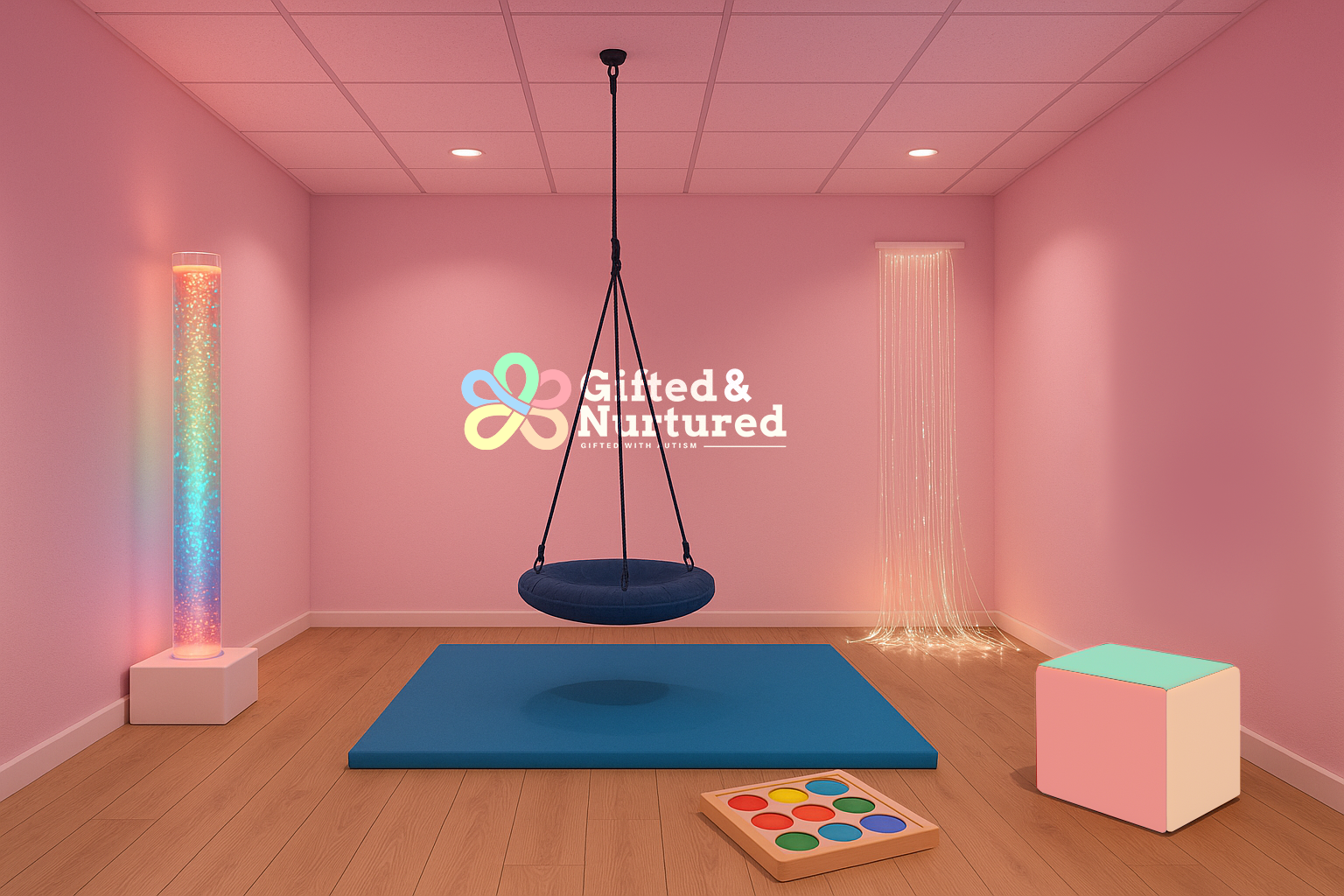

















That’s why we create sensory rooms and experiences that meet people where they are — spaces that support emotional regulation, reduce stress, and promote a sense of safety and well-being. Whether someone is seeking a calm or dynamic experience, our rooms offer personalised, inclusive environments where individuals can regulate their emotions, explore safely, and engage with the world in their own way.
Beyond physical spaces, our work is about recognition and inclusion. It's about acknowledging the genius that sits outside traditional systems — and creating environments where that genius can be nurtured.
We partner with schools and organisations across Australia and the Middle East to create these spaces. And we train the carers and educators who use them — helping them build deeper confidence, understanding, and connection to integrate into their work with neurodivergence. Because creating the right space is just one piece of the puzzle — it’s the support within that space that truly allows each person’s gifts to shine through.
We believe that when someone feels truly seen, nurtured, and supported, their gifts don’t just survive — they thrive.




Sensory spaces offer a safe environment for children to recognise, process, and manage their emotions at their own pace.
Carefully curated sensory experiences help soothe the nervous system, easing feelings of stress and overstimulation.
Children are free to explore their senses in a secure, non-judgemental space—building trust in themselves and their surroundings.
By engaging multiple senses, these experiences support the brain’s ability to organise and respond to sensory input more effectively.
Sensory-rich environments can gently re-centre children, helping them stay present and engaged in learning or play.
Multisensory activities stimulate brain development and strengthen pathways that support memory, communication, and problem-solving.
Thoughtfully designed sensory settings offer moments of stillness—allowing children to unwind, reset, and simply be.
Giving children the freedom to choose how they engage with sensory tools empowers them to trust their instincts and feel in control.